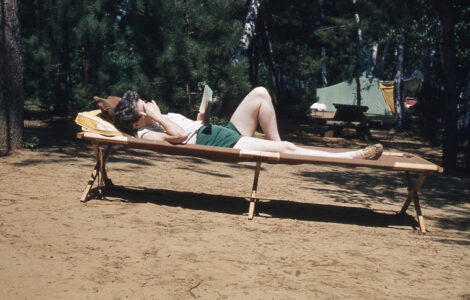In search of democracy in a small New York town
America’s three-branch government model
–
Every high school student learns that in America, the powers exercised by federal, state and local officials are to be limited by a system of checks and balances among the branches of government. Here is a passage from a typical high school textbook, “Government Alive: Power, Politics and You,” used by students at the Springville Griffith Institute located in Springville, New York:
“The Constitution divides power in the national government among the three separate branches. This separation of powers was a key component in the framers’ vision of limited government. James Madison wrote, ‘The accumulation of all powers, legislative, executive and judiciary, in the same hands … may justly be pronounced the very definition of tyranny.’
“The framers took this principle a step further by inserting provisions in the Constitution that would allow each branch to check, or limit, the power of each of the other branches.”
Among the more familiar checks are: the ability of the executive branch to veto bills passed by the legislature, legislature approval and oversight of executive branch spending plans, and a judicial branch empowered to rule on the legality of executive branch and legislative branch actions.
In Washington, for example, a court has ruled that members of the House of Representatives have the authority to sue President Obama over a health care spending dispute, claiming that the president’s expenditures have not been appropriated by the Congress.
Since 1789, this federal three-branch model has been widely adopted nationwide and in New York state.
–
New York state
–
The three-branch model in Albany includes a two-chamber legislature consisting of the Assembly and the Senate, an elected governor serving as the chief executive of a 160,000-person executive branch, and a unified, statewide court system adjudicating disputes involving the state’s Constitution and other state and local laws.
Gov. Cuomo’s January 2017 veto of a bill passed by the state legislature that would have transferred certain legal costs now incurred by counties to the state, is an example of checks and balances at work in New York state.
–
Erie County
–
Erie County’s three-branch government includes a single-chamber, 20-member county legislature, an elected county executive officer in charge of the county’s 4,000-person executive branch, and the statewide unified court system adjudicating disputes arising from the New York State Constitution, state and local laws.
In July 2016, Erie County Executive Mark Poloncarz vetoed the legislature’s bill proposing changes to the county’s charter. Poloncarz told the Buffalo News that he opposed the bill because it would weaken his authority over the county attorney’s office and strengthen the legislature’s power by extending legislators’ term in office from two to four years.
The introduction of the three-branch model in Erie County is a relatively recent event. The Erie County Legislature’s website tells us that, “Up until 1961, legislative and executive powers in Erie County were combined in the Board of Supervisors … (but) … With the adoption of the Charter (form of government in 1959), Erie County established a traditional form of legislative, executive and judicial separation of powers which is common to all other levels of government.”
Well, not exactly. Let’s take a closer look at the town of Colden.
–
Town of Colden
–
Unlike both New York state and Erie County, in two significant ways the town of Colden’s government structure deviates from the traditional three-branch model.
First, state law does not provide for a separate executive branch in town governments. The same five-member (part-time) elected town board — the state-authorized law-making body in the town — is also responsible for overseeing the execution of its own laws and the implementation of the town’s services and programs. This knocks one leg out from under the three-branch model by eliminating an independent town executive branch, staffed with trained officers authorized to challenge laws passed by the town’s law making board.
In the event the Colden town board passes an ill-advised bill or improperly implements its own laws, or purposefully fails to implement its own laws, there is no independent town office to veto the bill or to otherwise challenge such mismanagement.
Second, since the town’s independent judicial branch — a component of the statewide, unified court system — is not actively in the business of holding town officers accountable, another leg of the three-branch model is lost.
To be fair, to function as a check on the performance of the town board, the Colden Town Court justices depend on county local law enforcement officers, in conjunction with county prosecutors, to bring cases alleging town misdeeds before the court. It is not the Colden court’s fault that the Erie County Sheriff’s Office and the Erie County District Attorney’s Office have little or no interest in investigating and prosecuting cases involving the performance of small-town public officials.
In larger municipalities, newspaper and broadcast media investigative reporters, often using anonymous tips, routinely expose public misdeeds. These reports then lead to further inquiry by law enforcement investigators and prosecutors. This watchdog resource for keeping public officials accountable is generally missing in small, rural towns.
To sum up, the Founders’ three-branch model of checks and balances to guard against too much power vested in too few hands has been abandoned in the town of Colden as well as in 931 towns in New York state. What takes the place of the all-American three-branch model of government in the town of Colden is a one-branch unit of government that concentrates, unchecked, political power in a single administrative body.
Does this make the government operating in the town of Colden, and hundreds of other small town in New York state, less democratic?
—
Ronald Fraser, Ph.D., lives in the town of Colden and is the administrator of the Small Town Civics website located at www.smalltowncivics.com.


